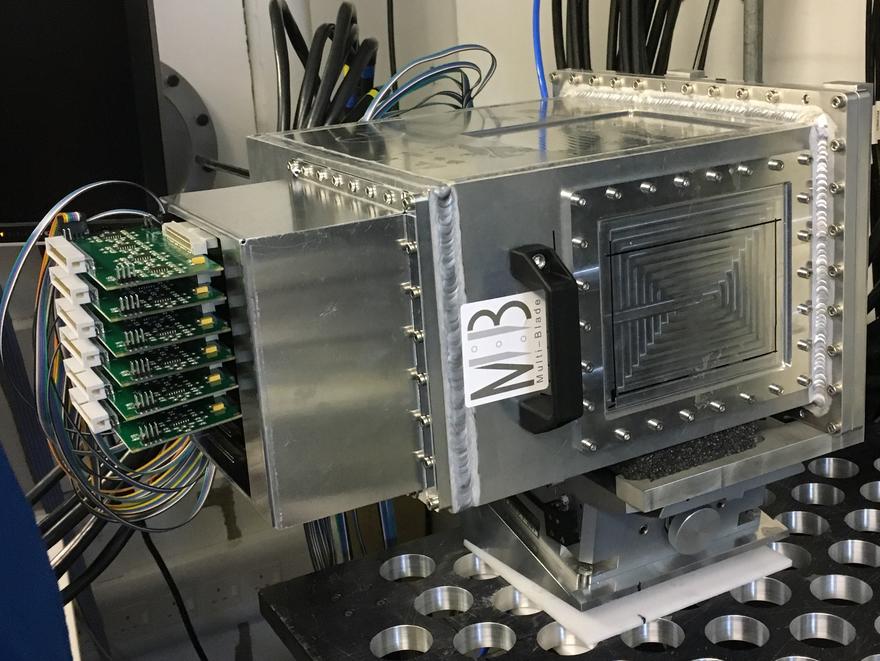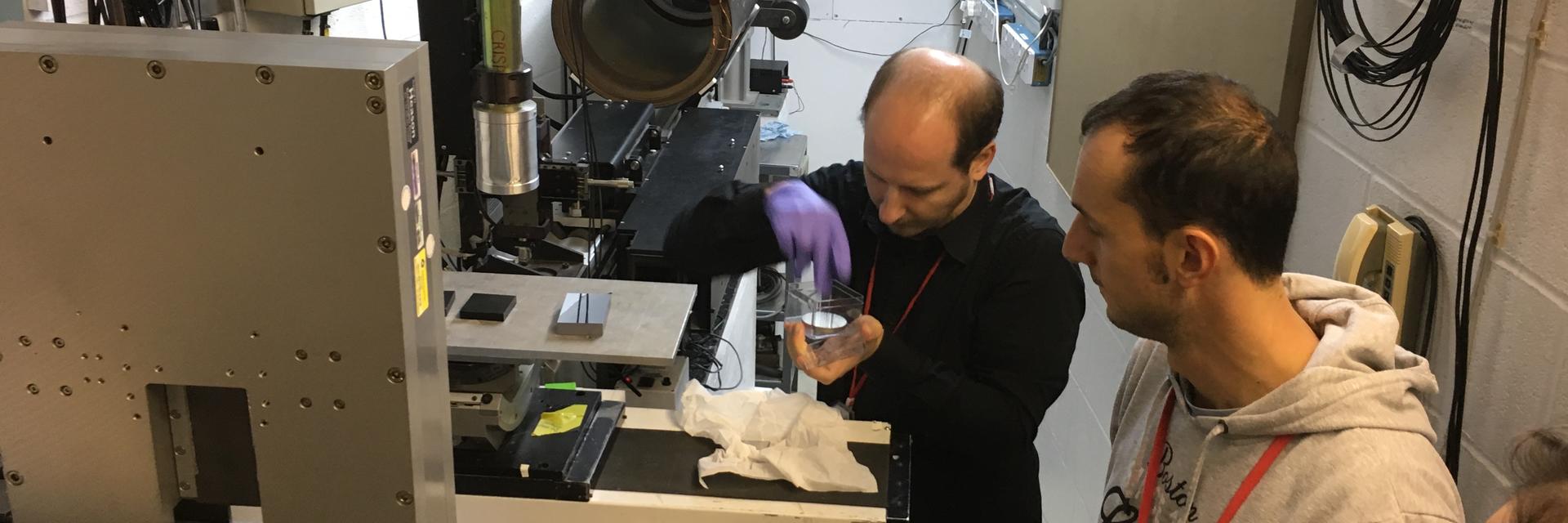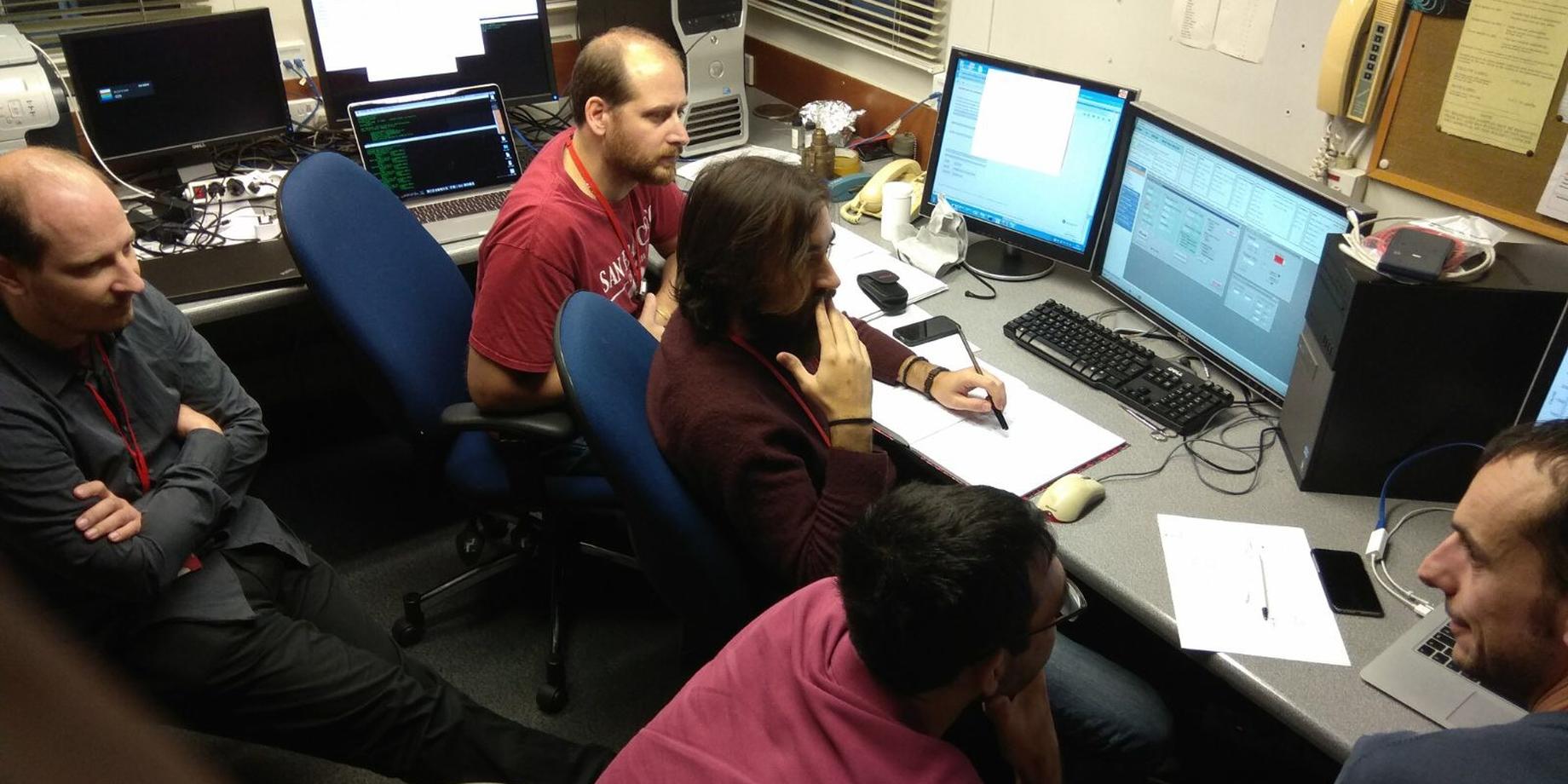
A review article published this week marks a major milestone in the development of novel detector technologies that will enable scientific research at ESS.
LUND—A review article published online Wednesday in The Proceedings of the Royal Society A serves to validate the Boron-10-based Multi-Blade detector for scientific use at the European Spallation Source (ESS). The detector has been developed according to specifications for the world-leading ESS reflectometers ESTIA and FREIA, and will now undergo its final optimisations for use with these instruments.
“The Multi-Blade is now a mature technology ‘ready for use’ on neutron instruments, and this is a major accomplishment for everyone involved,” says ESS Detector Group Leader Richard Hall-Wilton. “The entire project has been a model of collaboration over several years, several institutions, all focused on the ultimate goal: detectors for ESS.”
Better detector technology has the potential to increase the quality of neutron reflectometry worldwide, and the discipline contributes to research across a wide spectrum of scientific investigation. Current neutron reflectometry studies will advance, for example, the quests to develop next-generation energy and data storage technologies, and improve studies in structural biology that contribute to better pharmaceutical treatments and cures.
A collaboration held together by BrightnESS
Only three years ago, the need for novel detector technology for some ESS instruments remained a technical risk for the project. The last 12 months have seen the validation of two such detector concepts, both born at the Institut Laue-Langevin (ILL) about a decade ago and now brought into production at ESS. Together, the large-area Multi-Grid detector for neutron spectroscopy and the Multi-Blade detector for neutron reflectometry will serve for four of the 15 instruments under construction.
The last three years of both of these groundbreaking R&D projects were funded by the European Union’s BrightnESS grant. They mark the first successful modern development of neutron detectors that use Boron-10 as the detection medium rather than the industry-standard Helium-3. The change has been driven by both the higher performance requirements of ESS as well as a scarcity of Helium-3 that has called its future availability into question.
The origin of the Multi-Blade concept can be traced to ESS detector scientist Francesco Piscitelli’s work at ILL and the University of Perugia. Subsequently, Perugia, ILL, ESS and Sweden’s Linköping University all made critical contributions to the proof-of-concept prototype. Under the BrightnESS Project, groups from Lund University and Hungary’s Wigner Research Centre for Physics joined forces with ESS, Perugia and Linköping to bring the technology into production.
Eleven ESS staff members are credited with contributions to this week’s Royal Society publication, including the lead authors Giacomo Mauri, a joint PhD student between Perugia and ESS, and Francesco Messi, a researcher at both Lund University and ESS. The ISIS Neutron & Muon Source in the UK provided the beamline on which the final validation tests were conducted.
A new age for neutron reflectometry studies
Neutron reflectometry is at the heart of some of the most promising scientific research being conducted today. Current research suggests that it holds the secrets to confronting a number of pressing challenges currently facing our society: health care, Big Data, climate science and securing a clean and sustainable energy supply. That research is now limited by a lack of neutron flux, and this is one of the major drivers behind the ESS project.
“The scientific validation of the Multi-Blade is great news both for ESS and materials science globally, as a number of facilities will have the opportunity to benefit from the technology,” says ESS Director for Science Andreas Schreyer. “Critical for ESS is that this validation ensures that we will deliver world-leading reflectometers with scientific capabilities unavailable at any other neutron source.”
Reflectometry puts high demands on detector technology at any neutron source facility, but the extraordinarily high neutron flux that will be produced by ESS has made it necessary to develop entirely new detector technologies.
"A reflectometer focuses an intense beam of neutrons on a sample," says Mauri. "The flux on an ESS reflectometer will be more than 100 times larger than that on existing neutron instruments. Like an overexposed photograph, this instantaneous intensity would immediately saturate any other detector in use today."
Therefore, aside from the requirement to base the technology on an entirely new detector medium than current state-of-the-art, there were two additional challenges the Multi-Blade had to overcome in order to meet the high requirements for ESTIA and FREIA: limits on spatial resolution (the minimum space in which two neutrons are individually detectable), and the rate at which neutrons are counted.
“We tested well-known reflectometry samples on the CRISP reflectometer at ISIS to prove that the Multi-Blade is able to reproduce the scientific output of its current detector,” says Piscitelli, describing the experiments detailed in the breakthrough paper. “We were first of all able to demonstrate that the prototype made accurate reflectometry measurements. Moreover, the prototype achieved up to four times better spatial resolution and a peak rate count 10 times better than the Helium-3 detector. This makes for both faster measurements and striking differences in the visualised data output of an experiment.”
The Multi-Blade will raise the performance possibilities for neutron reflectometers both at spallation and reactor-based neutron sources, many of which have been watching this research closely.
The test results at ISIS have led to further improvements of the technology, which are now underway. Additional testing and optimising is planned using the AMOR reflectometer at Switzerland’s Paul Scherrer Institute, which is the most similar instrument environment to ESTIA at ESS. Following this test, the detectors for ESTIA and FREIA will go into detailed design.

































